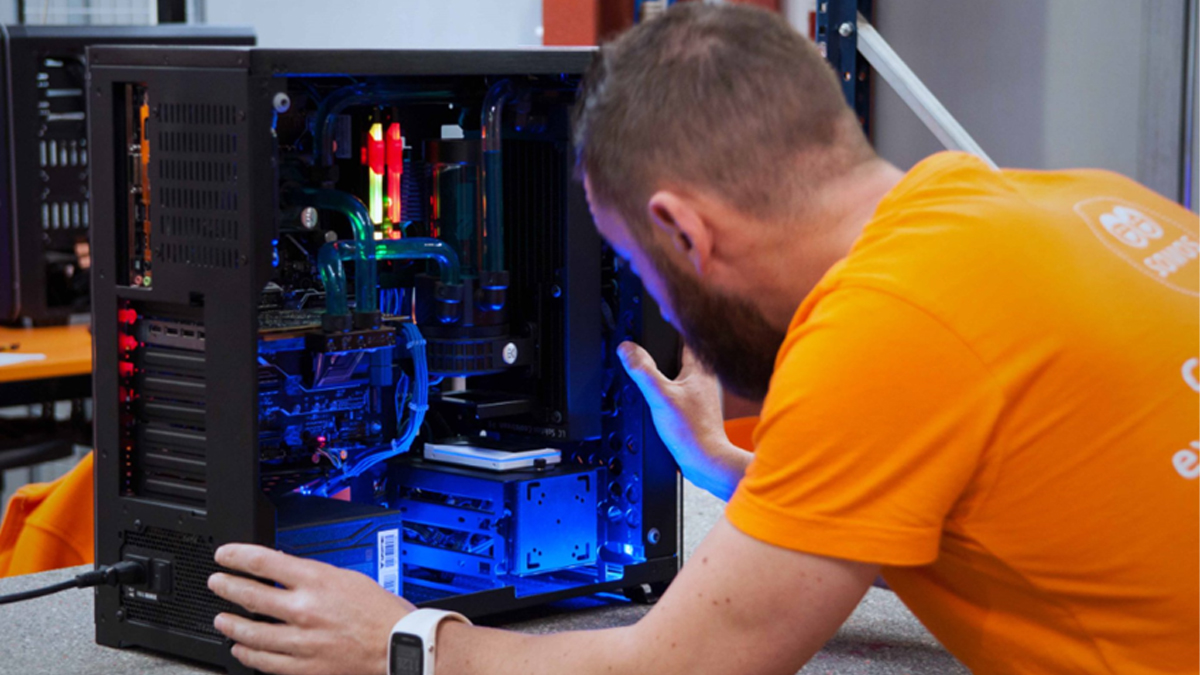If you’re a PC gamer and you’re enduring the heat of these summer months, chances are you’ve noticed that after half an hour of playing your body is drenched in sweat. You are not alone, it is the fault of your tower, which is very efficient at evacuating heat.
One of the guilty pleasures of the player is playing a few games in winter. Why? Well, because the computer gradually warms up the room, without the need to turn on the heating. You save on your gas bill and, on top of that, you’re having a great time at the movies with your friends.
This is because our PC converts all the electricity that enters it into heat. And it does it very efficiently. In that sense, computers are almost perfect machines: All the watts that they consume to be able to function are transformed into heat.which they then evacuate outside the box.
And while we can’t calculate exactly how hot your room gets when you play (This is physically impossible due to the thousands of variables that exist depending on each case: room, source, components, house materials…)we can explain how it works.
The power supply of your desktop computer can have a nominal power of 800 W or 115 W if we are talking about a gaming laptop, which have to consume much less to avoid burning along the way. Here’s a guide to optimizing Windows to play at its best.
But those numbers do not indicate the real load of operation of the computer. They simply indicate the maximum upper threshold. An 800W power supply does not draw 800W every second that it is running, rather that is the maximum load that you can safely provide.
To further complicate matters, computers do not have a stable state in regards to energy consumption. If you have a heater with a low, medium, and high setting of 300, 500, and 800 watts, respectively, you know exactly how much energy is consumed at each setting level.
With a computer, however, there’s a whole power curve beyond something as simple as High/Low. This curve includes everything from browsing, to watching videos on YouTube or playing the latest Battlefield at 144 FPS. At every moment the PC consumes one thing or another.
Instead of making an estimate based on the label, we must actually measure what we consume. To measure accurately, you need a tool that reports the wattage consumption of your computer and peripherals.
For this, it is best to use an independent energy meter, which plugs into the wall and we plug all our equipment into it. This informs us of how many watts it is consuming at any given time.
Unfortunately, we can’t tell you “ok, your computer adds 500W of power to your room, so it will increase the temperature of the room by 5 degrees for 1 hour”We cannot do that for these reasons.
There are too many variables at play: maybe your house is a very insulated concrete structure, or maybe you live in an old country house without insulation, with a constant draft and single pane windows, it also depends on the season of the year you are in. ..
The time of year also influences. When the sun beats down on your house in the summer, that extra heat radiating from your gaming PC can make an otherwise bearable room unbearably hot. But in winter, on the other hand, it can be quite cozy.
All this means that even if those 500 W of energy enter your room -because all the electricity will eventually be converted into waste heat-, what that generated heat means for the temperature of the room is something variable and personal.
So we encourage you to do a real test that works in your case: put a tabletop thermometer in the room and check the temperature before you play and then while you play. Chances are you’re a couple of degrees higher… or you’re not.
George is Digismak’s reported cum editor with 13 years of experience in Journalism
